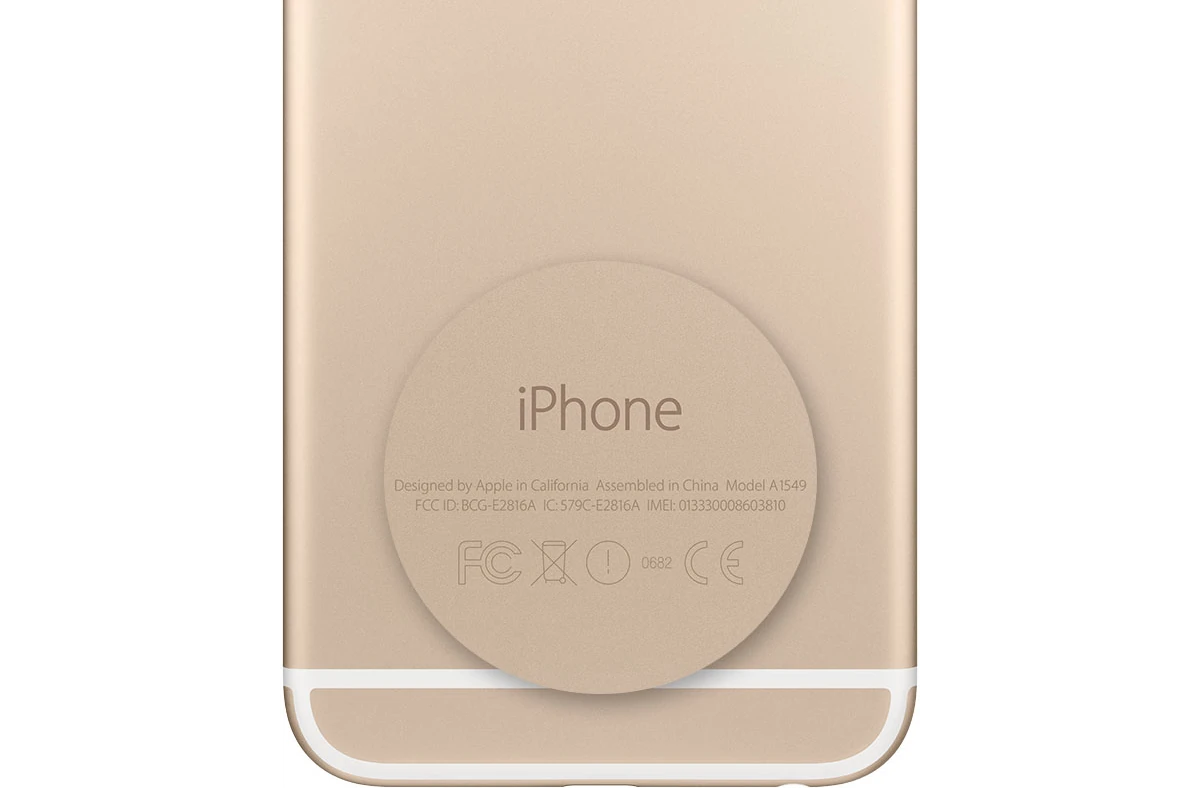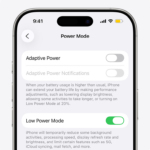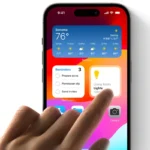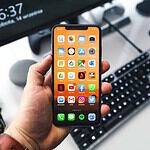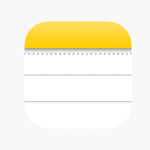Wondering if your iPhone is locked to a specific carrier or free to use with any network? The IMEI number is your key to finding out. This unique identifier can reveal whether your iPhone is carrier-locked or ready to use with any SIM card. You can check if your iPhone is unlocked by going to Settings > General > About and looking for “Carrier Lock” – if it says “No SIM restrictions,” your iPhone is unlocked.
Not sure where to find your IMEI number? It’s simple – just dial *#06# on your iPhone or look in your phone settings under General > About. This 15-digit code is unique to your device and carries important information about your phone. Knowing your iPhone’s unlock status can save you time and money, especially when traveling or switching carriers.
An unlocked iPhone can be used with any carrier’s SIM card, while a locked iPhone is tied to a specific carrier. Checking your phone’s IMEI (International Mobile Equipment Identity) number is one of the most reliable ways to confirm its lock status.
🔎 Step 1: Find Your iPhone’s IMEI Number
There are a few ways to locate your IMEI:
- In Settings
- Go to Settings > General > About
- Scroll down to find your IMEI number.
- Dial a Code
- Open the Phone app and dial *#06#
- Your IMEI will appear on screen.
- On the SIM Tray / Back of Device
- Some models have the IMEI engraved on the SIM card tray or back of the phone.
🔎 Step 2: Use an Online IMEI Checker
Once you have the IMEI, you can use a trusted online service to check the unlock status:
👉 Enter your IMEI, and the tool will tell you if your iPhone is Locked or Unlocked, and may also show:
- Carrier lock status
- “Find My iPhone” (FMI) status
- Warranty and activation details
🔎 Step 3: Confirm with Your Carrier (Optional)
For the most accurate result, you can also:
- Contact your carrier’s customer service and provide your IMEI.
- Ask them to confirm whether your device is locked or eligible for unlocking.
✅ Quick Tips
- If you see “No SIM restrictions” in Settings > General > About > Carrier Lock, your iPhone is unlocked (source: Business Insider).
- Always use official or reputable IMEI checkers to avoid scams.
- If your iPhone is locked, you may be able to request an unlock from your carrier (requirements vary).
Key Takeaways
- Check your iPhone’s unlock status directly in Settings under General > About by looking for “No SIM restrictions” in the Carrier Lock field.
- Find your IMEI number by dialing *#06# or looking in your iPhone settings to verify lock status with your carrier.
- An unlocked iPhone works with any carrier’s SIM card, giving you freedom to switch networks or use local SIMs when traveling.
Understanding IMEI and Its Role
The IMEI number serves as a unique identifier for mobile phones and plays a crucial role in tracking devices and determining their lock status. This digital fingerprint helps carriers and users manage phone security and verify device information.
Defining IMEI Number
IMEI stands for International Mobile Equipment Identity. It’s a unique 15-digit code assigned to every mobile phone. Think of it as your phone’s social security number or fingerprint. No two active phones can have the same IMEI.
You can find your iPhone’s IMEI in several ways:
- Dial *#06# on your phone keypad
- Check under Settings > General > About
- Look on the original packaging
- View it on the SIM tray (on some models)
The IMEI contains coded information about your device, including the manufacturer, model type, and country of approval. This code helps identify your specific device among millions of others worldwide.
Importance of IMEI in Mobile Phones
The IMEI number serves several important functions for mobile phones. First, it helps track stolen devices. If your iPhone is stolen, you can report its IMEI to your carrier, who can then block the device from accessing their network.
Mobile carriers use IMEI numbers to:
- Verify warranty status
- Confirm device authenticity
- Block stolen phones
- Track phone locations in emergencies
For iPhone users, the IMEI also helps when switching carriers or buying used phones. It tells you if a phone will work on your network. The number also helps Apple provide proper support since it contains details about your specific device model and manufacturing information.
How the IMEI Helps Determine Lock Status
The IMEI number links to carrier databases that contain information about your iPhone’s lock status. When you check if your iPhone is unlocked using the IMEI, you’re essentially looking up this status in these databases.
You can check your iPhone’s lock status through:
- Online IMEI checker websites
- Contacting your carrier directly
- Using third-party IMEI lookup services
However, some sources indicate there may be limitations to IMEI checks, as lock status can change. A more reliable method might be checking your iPhone’s settings directly. Go to Settings > General > About and look for a “Carrier Lock” section. If it shows “No SIM restrictions,” your iPhone is unlocked.
The IMEI helps determine if a phone is carrier-locked, blacklisted, or reported stolen—vital information when buying used phones.
The Different Types of Carrier Locks
iPhones can have various types of locks that limit their use with different carriers or networks. These locks serve different purposes—from carrier restrictions to security measures—and understanding them helps you know if your iPhone can be used with your preferred service provider.
What is a SIM Card Lock?
A SIM card lock, also known as a carrier lock, prevents your iPhone from working with SIM cards from other mobile carriers. When a phone is carrier-locked, it will only accept SIM cards from the original carrier.
Many carriers lock phones sold through contracts or payment plans. This ensures customers fulfill their financial obligations before switching to another provider.
You can check if your iPhone has a SIM lock by going to Settings > General > About. Look for the “Carrier Lock” field.
Unlocking usually requires:
- Completing your contract
- Paying off your device
- Meeting your carrier’s unlock requirements
- Requesting an unlock code from your carrier
Understanding SIM Restrictions
SIM restrictions are specific rules that limit how you can use different SIM cards with your iPhone. These restrictions vary by carrier and region.
Common types of SIM restrictions include:
Geographic restrictions: Your phone might only work with carriers in a specific country or region.
Network restrictions: The phone might only accept SIMs from certain network types (like GSM or CDMA).
Temporary locks: Some carriers implement temporary locks that expire after a set period.
In iOS, you can find your SIM restriction status by checking Settings > General > About. If you see “No SIM restrictions,” your iPhone is fully unlocked and can work with any carrier’s SIM card.
iOS Software Locks
iOS software locks are built into the iPhone’s operating system to enforce carrier restrictions. These locks work at the system level to check if a SIM card is authorized for use.
Since iOS 14, Apple has made it easier to see your phone’s lock status. The system now clearly shows if your iPhone has restrictions under Settings > General > About.
Software locks can be updated or removed through:
- Official carrier unlock processes
- iOS updates that modify lock status
- Activation policy changes on Apple’s servers
Unlike physical SIM restrictions, software locks can sometimes be updated remotely when a carrier approves an unlock request. This means the phone doesn’t need to be physically modified to remove the lock.
iCloud Activation Lock
The iCloud Activation Lock is a security feature that’s separate from carrier locks. It prevents anyone from using your iPhone without your Apple ID and password.
This lock activates automatically when you turn on Find My iPhone. It ties your device to your Apple ID, making it much harder for thieves to use stolen devices.
Key facts about iCloud Activation Lock:
- It remains active even after resetting the phone
- It requires your Apple ID password to disable
- It’s not related to carrier restrictions
- It cannot be removed by checking your IMEI
When buying a used iPhone, always verify it’s not activation locked. Ask the seller to remove the lock before completing the purchase, or check together that the device can be set up without an activation lock screen appearing.
Pre-Unlocking Checklist
Before diving into the unlocking process, it’s important to verify your iPhone’s current status and ensure it will work with your desired carrier. These steps will save you time and potential frustration.
Verify iPhone is Locked
First, you need to confirm if your iPhone is actually locked to a carrier. The simplest way is to insert a SIM card from a different carrier. If your phone shows “No Service” or “SIM Not Valid,” it’s likely locked.
You can also check by looking at your iPhone’s settings. Go to Settings > General > About and look for “Carrier Lock” or “Network Provider Lock.” If it says “No SIM restrictions,” your iPhone is already unlocked.
Another reliable method is to call your current carrier directly. Customer service can quickly tell you if your device is locked to their network and what steps you might need to take for unlocking.
Ensuring Compatibility with Other Carriers
Not all iPhones work with every carrier, even when unlocked. This is due to different network technologies and frequencies.
You can check your iPhone’s compatibility using the carrier’s online IMEI checker tool. T-Mobile, AT&T, Verizon, and other carriers offer these tools on their websites.
To find your IMEI number:
- Dial *#06# on your iPhone
- Check under Settings > General > About
- Look on the original packaging
- Check on the SIM tray (on some models)
Make sure the iPhone model supports the bands used by your target carrier. Newer iPhones generally have better cross-carrier compatibility than older models.
Determining Lock Status via Settings
Your iPhone’s settings menu provides several ways to check if your device is locked:
The most direct path is through Settings > General > About. On iOS 14 and newer, you should see a “Carrier Lock” field. If it says “No SIM restrictions,” your iPhone is unlocked.
If you don’t see this option, try using the Mobile Data Options test. To do this:
- Go to Settings > Cellular/Mobile Data
- Look for “Mobile Data Options”
- If you see “Mobile Data Network” or “Cellular Data Network,” your iPhone might be unlocked
For stubborn cases, software like EaseUS MobiUnlock can help determine lock status, though this requires connecting to a computer. These programs can read deeper information about your iPhone’s lock status than the Settings app alone.
Using IMEI to Check iPhone Unlock Status
Your iPhone’s IMEI (International Mobile Equipment Identity) number is a unique identifier that can help determine if your device is carrier-locked or unlocked. Checking your unlock status through IMEI is straightforward and gives you reliable information about your iPhone’s carrier restrictions.
Accessing IMEI through iPhone Settings
Finding your IMEI through your iPhone settings is quick and simple. Go to the Settings app on your iPhone and tap on “General.” Then select “About” to view your device information.
On the About page, scroll down until you see your IMEI number. It’s typically a 15-digit number shown clearly on this screen.
You can also check if your iPhone is unlocked directly from settings. On newer iOS versions, look for “Carrier Lock” in the About section. If it says “No SIM restrictions,” your iPhone is already unlocked.
To copy the IMEI, simply tap and hold on the number, then select “Copy” from the popup menu. This makes it easier to paste into an online checker tool later.
Locating IMEI on Physical Device
If you can’t access your iPhone settings, you can find the IMEI number on the device itself in several ways.
For newer iPhones without a home button, check the SIM tray. Remove it carefully using the SIM ejector tool, and you’ll see the IMEI printed on the slot.
On older models, the IMEI is often printed on the back of the device. If you have the original packaging, the IMEI is also listed on the barcode label.
The fastest way to view your IMEI on any working iPhone is to dial *#06# on the phone keypad. The IMEI will immediately display on your screen without needing to make an actual call.
Take a photo or write down your IMEI number somewhere safe for future reference.
Utilizing Online IMEI Checkers
Several online services can tell you if your iPhone is unlocked by checking your IMEI number. These tools access carrier databases to provide unlock information.
Popular options include IMEI.info and IMEI.org, which offer free basic checks. Enter your IMEI number on their website and follow the instructions to get your results.
Some checkers might show:
- Carrier status: Which network the phone is locked to
- SIM lock status: Whether it’s locked or unlocked
- Blacklist status: If the device has been reported lost or stolen
Be cautious with free checkers as they may not always be accurate. Some reliable services charge a small fee for detailed reports. These paid services often provide more complete information about your device.
Checking Unlock Status via iTunes
iTunes offers another way to verify if your iPhone is unlocked, especially useful for those with a Windows PC or Mac.
Connect your iPhone to your computer and open iTunes (or Finder on newer macOS). If iTunes recognizes your device, select it when it appears in the program.
Insert a SIM card from a different carrier than the one currently linked to your iPhone. If iTunes shows a message saying the SIM card is not compatible or requires activation, your phone is likely locked.
An unlocked iPhone won’t display carrier-specific messages when connecting to iTunes with different SIM cards. It will simply show normal synchronization options.
For the most reliable results, try using SIM cards from two different carriers during this test. This helps confirm whether your iPhone truly works with multiple carriers.
Steps to Unlock an iPhone
Unlocking your iPhone gives you the freedom to use it with any carrier. This process varies based on your situation and the tools you have available.
Contacting Your Carrier for Unlocking
Most carriers will unlock your iPhone if you meet certain requirements. These typically include:
- The phone must be paid off completely
- Your account must be in good standing
- The device must have been active on their network for a certain period (usually 40-90 days)
To start the process, call your carrier’s customer service or visit their store. You’ll need to provide your iPhone’s IMEI number, which you can find by dialing *#06# or going to Settings > General > About.
After submitting your request, carriers usually process it within 24-72 hours. They’ll send confirmation by email or text when complete. Some carriers may charge a small fee for this service.
Using Third-Party Software for Unlocking
When carrier unlocking isn’t an option, third-party software can help. Programs like Aiseesoft iPhone Unlocker and EaseUS MobiUnlock offer alternative solutions.
Here’s how to use them:
- Download and install the software on your computer
- Connect your iPhone using a USB cable
- Launch the program and select the unlock option
- Follow the on-screen instructions
These tools often cost between $20-50 for a license. The success rate varies depending on your iPhone model and iOS version.
Be cautious when using third-party software. Only download from reputable sources to avoid malware. Some programs might not work with newer iPhone models or iOS versions.
Receive and Enter the Unlock Code
After your carrier approves your unlock request, you’ll typically receive an unlock code via email. Here’s what to do next:
- Insert a SIM card from a different carrier
- If prompted, enter the unlock code you received
- Wait for your iPhone to activate with the new network
If you don’t get prompted for a code, your iPhone might unlock automatically when you insert the new SIM. This is common with newer iPhones.
To verify the unlock worked, check Settings > General > About. Look for “No SIM restrictions” next to Carrier Lock. You can also try making calls or using data with the new SIM.
If the unlock fails, contact your carrier again or try restarting your iPhone before reinserting the SIM card.
Removing Apple ID for Complete Unlocks
Sometimes you need to remove an Apple ID from a device. This is different from carrier unlocking and is needed when:
- You bought a used iPhone with the previous owner’s Apple ID
- You forgot your own Apple ID password
- You need to reset a company device
The proper way is to have the original owner remove their account:
- Go to Settings > [name] > Sign Out
- Enter the Apple ID password when prompted
- Tap “Turn Off” if asked about keeping copies of data
- Finally, tap “Sign Out” to confirm
For situations where this isn’t possible, contact Apple Support with proof of purchase. They may help remove the previous account.
Warning: Avoid unauthorized removal methods. They may violate Apple’s terms of service and could damage your device.
Considerations When Buying a Used iPhone
When shopping for a used iPhone, checking if it’s unlocked and verifying its status through the IMEI number can save you from future headaches. These simple checks help ensure you’re making a smart purchase.
Ensuring the iPhone is Unlocked
Before buying a used iPhone, check if it’s carrier-unlocked. An unlocked phone lets you use any carrier’s SIM card, giving you more flexibility with service providers.
You can check the lock status directly on the iPhone by going to Settings. Insert a SIM card from a different carrier than the one currently showing, and see if it connects to the network.
If you have access to the phone, you can also check by going to Settings > General > About. If “No SIM restrictions” appears next to Carrier Lock, the iPhone is unlocked. If you see a specific carrier listed, the phone is locked to that network.
Ask the seller to show proof the phone is unlocked. Many sellers will provide screenshots of the settings page or carrier documentation as evidence.
Verifying IMEI Status Before Purchase
The IMEI (International Mobile Equipment Identity) is a unique 15-digit number that identifies your iPhone. This number reveals important information about the device’s history.
To find the IMEI, dial *#06# on the phone, check under Settings > General > About, or look on the SIM tray. Write this number down before buying.
Use the IMEI to check if the phone is activation locked through Apple’s official website. This tells you if the phone is still linked to someone’s Apple ID.
Online IMEI checkers can also tell you if the phone was reported lost or stolen. Never buy a phone with a blacklisted IMEI as it may be blocked from cellular networks.
When meeting a seller in person, verify the IMEI for Activation Lock status by attempting to set up the device.
Potential Risks with Locked Used iPhones
Buying a carrier-locked iPhone limits your options significantly. You’ll be stuck with one service provider, which might not offer the best coverage in your area.
If the previous owner hasn’t fully paid off the phone, the carrier might blacklist it. This means no cellular service at all, turning your purchase into an expensive iPod.
Financial risks include:
- Paying to unlock the phone (if possible)
- Higher service costs from being limited to one carrier
- Potential resale value drop
Phones with activation lock still enabled cannot be reset or used without the original owner’s Apple ID and password. Before purchasing, try to set up the phone to confirm it’s not activation locked.
Always get a receipt that includes the IMEI number and the seller’s contact information for protection against fraud.
Post-Unlocking Actions
Once you’ve successfully unlocked your iPhone, several important steps will help you make the most of your newly unlocked device. Taking the right actions ensures your phone works properly with different carriers.
Switching Carriers and SIMs After Unlocking
After confirming your iPhone is unlocked, you can now use it with any compatible carrier. Start by powering off your device completely.
Remove your current SIM card using the SIM ejector tool or a small paperclip. Push it gently into the small hole on the side of your iPhone.
Insert the new carrier’s SIM card and power on your device. Your iPhone should recognize the new carrier automatically.
You may need to contact the new carrier to activate service. They’ll help set up your account and transfer your phone number if needed.
Important: Some carriers require you to restart your iPhone after inserting a new SIM card. This helps the device properly recognize the new network settings.
Updating Mobile Data Settings
Your iPhone needs proper settings to work correctly with the new carrier. These settings control how your phone connects to mobile networks.
Go to Settings > Cellular > Cellular Data Options. Check if the APN (Access Point Name) settings match your new carrier’s requirements. Your carrier can provide these details if needed.
For some carriers, these settings update automatically when you insert the new SIM. Others may require manual setup or a carrier settings update.
To check for carrier updates, connect to Wi-Fi and go to Settings > General > About. If an update is available, you’ll be prompted to install it.
Consider resetting your network settings if you experience connection issues:
- Go to Settings > General > Reset
- Select Reset Network Settings
- Enter your passcode when prompted
Testing with Different Carrier SIM Cards
Before relying fully on your newly unlocked iPhone, test it thoroughly with different SIM cards. This confirms the unlocking process worked completely.
Try making calls, sending texts, and using mobile data with each SIM card. Check that all functions work properly, including:
- Voice calls (incoming and outgoing)
- SMS/MMS messaging
- Mobile data connection
- Visual voicemail
If you encounter any issues, try restarting your iPhone. Sometimes a simple reboot resolves connection problems.
For persistent problems, contact your new carrier’s support team. They can verify your account is properly set up and troubleshoot any network issues.
Also test international SIMs if you plan to travel. Some unlocked phones work with domestic carriers but still have restrictions for international use.
Troubleshooting Common Issues
When checking if your iPhone is unlocked using IMEI, you might face several challenges that can make the process difficult. These issues often have simple solutions once you understand what’s happening.
Dealing with Persistent Carrier Locks
If your iPhone shows it’s still locked after attempting to unlock it, don’t panic. First, check your phone’s current status by going to Settings > General > About. Look for “No SIM restrictions” text, which indicates an unlocked phone.
Sometimes carrier systems need time to update. Wait 24-48 hours after receiving confirmation that your unlock request was approved.
Try restarting your iPhone completely. Power it off, then turn it back on to refresh connections.
If the problem continues, you might need to contact your carrier directly. Some carriers require specific steps after approval:
- Backing up and restoring your iPhone through iTunes
- Inserting a different carrier’s SIM card
- Completing an activation process
Keep your unlock confirmation email or reference number handy when talking to support.
Resolving Unsuccessful Unlock Attempts
When your unlock attempts fail, there are several common causes. First, make sure your IMEI number is entered correctly when using online checkers. Even one wrong digit will cause errors.
Check if your iPhone meets your carrier’s unlock requirements:
- Phone is fully paid off
- Account is in good standing
- Contract obligations are fulfilled
- Phone hasn’t been reported lost or stolen
Important: Some carriers have waiting periods (typically 40-60 days) before allowing unlocks for new devices.
Third-party unlock services might fail if they use outdated methods. Stick to your official carrier or Apple-recommended solutions whenever possible.
If using online IMEI checkers, try a different service. Some databases update more frequently than others, providing more accurate information.
Addressing SIM Card Recognition Problems
After confirming your iPhone is unlocked, you might still have trouble using different SIM cards. First, ensure the new SIM card is properly sized for your iPhone model and inserted correctly.
Clean the SIM card and tray gently with a dry cloth. Dust or debris can prevent proper connections.
Try resetting your network settings by going to Settings > General > Reset > Reset Network Settings. This won’t delete your data but will clear network-related issues.
Check if the new carrier’s network is compatible with your iPhone model. Not all iPhones work with all network bands worldwide.
If your phone shows “Invalid SIM” or “No SIM” errors:
- Try the SIM in another phone to verify it works
- Update your iPhone to the latest iOS version
- Contact the new carrier to ensure the SIM is activated
Sometimes the new carrier needs to provide specific settings for internet and messaging services to work properly.
Differences Between iPhone and Android Unlocking
iPhones and Android devices handle carrier unlocking differently, with each platform having unique methods and indicators. The verification processes, settings locations, and IMEI check systems vary significantly between these mobile ecosystems.
Unlocking Processes for iOS vs. Android
On iPhones, checking unlock status is more straightforward. You can find this information by going to Settings > General > About and looking for “Carrier Lock” or “Network Provider Lock.” If you see No SIM restrictions, your iPhone is unlocked.
Android devices don’t have a built-in menu option to check carrier lock status. Instead, users typically need to:
- Insert a SIM card from another carrier and see if it works
- Call their current carrier to ask about unlock status
- Use dialer codes (which vary by manufacturer)
- Check through settings (location varies by brand)
With iOS 14 and newer versions, Apple made the unlock status more visible. Android’s fragmentation means the process differs between Samsung, Google, Motorola, and other brands.
IMEI Unlock Capabilities Across Platforms
Both platforms use IMEI numbers as unique identifiers, but how they work with unlock checks differs. For iPhones, online IMEI checker services can verify unlock status by accessing Apple’s database.
Android IMEI checks are less centralized. The results may:
- Be less reliable due to multiple manufacturers
- Vary in accuracy depending on the carrier
- Require carrier-specific tools
Third-party IMEI check websites often provide more detailed information for iPhones than for Android devices. This happens because Apple’s database is more standardized.
iPhone unlock status is tied to Apple’s servers, while Android unlock information is more carrier-dependent. This makes iPhone IMEI checks more consistent across different carriers worldwide.
Frequently Asked Questions
Many iPhone users want to know if their device is locked or unlocked before switching carriers. Here are answers to common questions about using IMEI numbers to check your iPhone’s lock status.
What are the steps to verify the lock status of an iPhone using its IMEI number?
To check your iPhone’s lock status using its IMEI number, first find the IMEI by going to Settings > General > About on your iPhone. Write down this 15-digit number.
Next, visit a trusted IMEI checking website and enter your IMEI number. These sites will process your information and tell you if your iPhone is locked to a specific carrier.
Some carriers like T-Mobile offer their own iPhone unlock checker services where you can enter your IMEI to check its status.
Is it possible to check an iPhone’s unlock status for free via IMEI online?
Yes, there are free options to check your iPhone’s unlock status online. The simplest way is through your iPhone’s settings.
Go to Settings > General > About and look for “Carrier Lock.” If it says “No SIM restrictions,” your iPhone is unlocked. If it says “SIM locked,” it’s still locked to a carrier.
Some online services offer basic IMEI checks for free, but more detailed reports often come with a small fee.
How to decode the unlock information of an iPhone from the IMEI details?
Decoding iPhone unlock information from IMEI details requires using special lookup services. These services check your IMEI against carrier databases.
The results typically show the original carrier, whether the phone is locked or unlocked, and sometimes additional information about blacklist status.
Most services will give you a simple “locked” or “unlocked” status, while paid services may provide more details about which networks your phone can work with.
Can you determine an iPhone’s carrier lock condition using the IMEI?
There are different views on this question. Some sources suggest the IMEI alone can’t tell you if an iPhone is unlocked, as this state can change over time.
However, many services do offer IMEI checks that connect to carrier databases to verify the current lock status of your device.
The most reliable way to check is through your iPhone’s settings or by contacting your carrier directly, as Apple recommends.
What reliable services are there to perform an IMEI check for an iPhone’s lock status?
Several trusted services can check your iPhone’s lock status using its IMEI. IMEI.org offers a popular online service for checking if your iPhone is factory unlocked.
Carrier websites often provide their own IMEI checking tools. These are especially reliable if you’re checking a phone from that specific carrier.
Some phone repair shops also offer IMEI checking services, though these may come with a fee.
How do carriers use IMEI numbers to lock or unlock iPhones?
Carriers use IMEI numbers as unique identifiers to lock iPhones to their networks. When an iPhone is sold with a contract, the carrier registers its IMEI in their database as locked.
When you request an unlock, the carrier updates their database to mark your IMEI as unlocked. This information is then synchronized with Apple’s activation servers.
The actual unlocking happens remotely through this database update, not through any physical change to your iPhone. That’s why you need to contact your carrier to request an unlock when you’re eligible.

